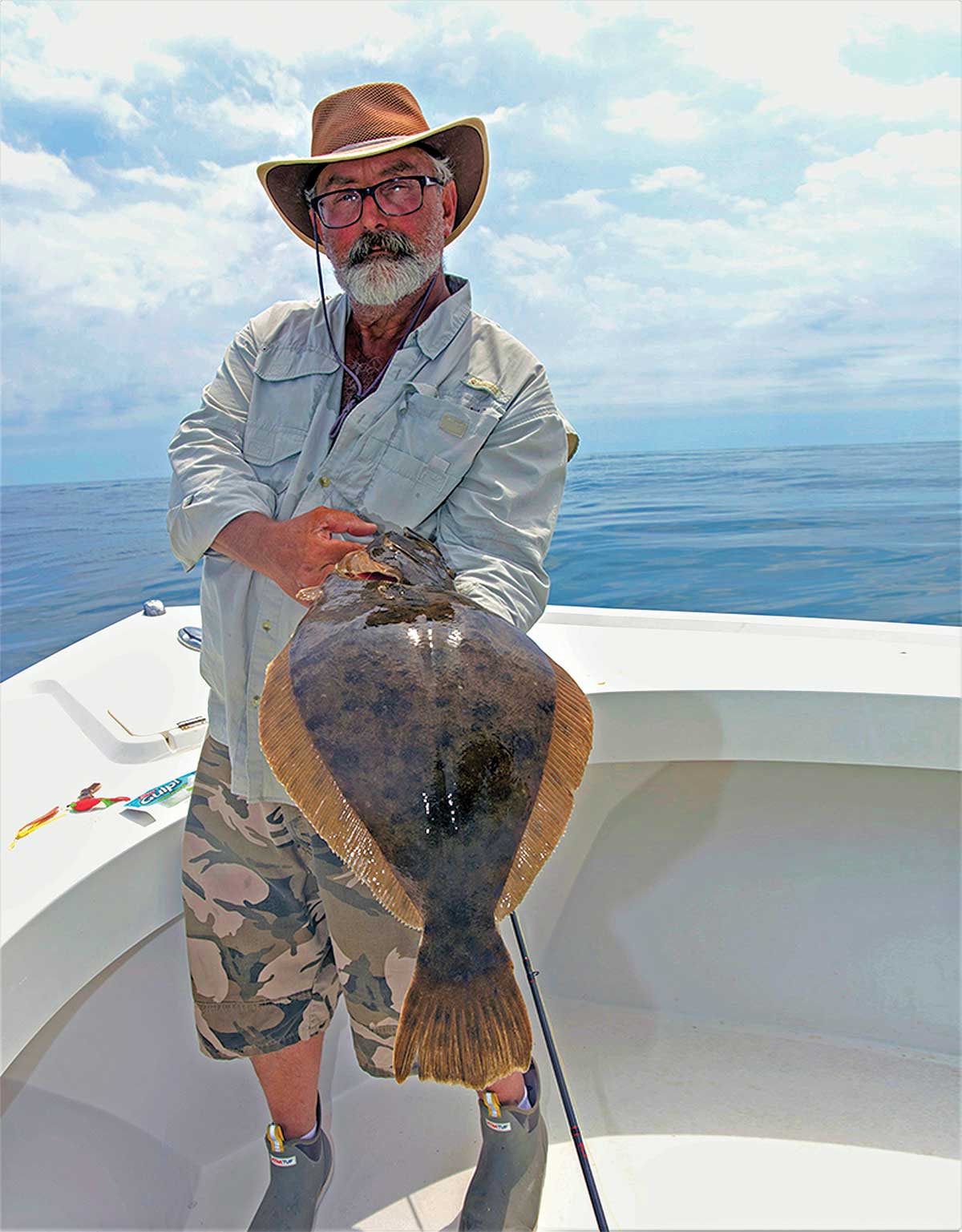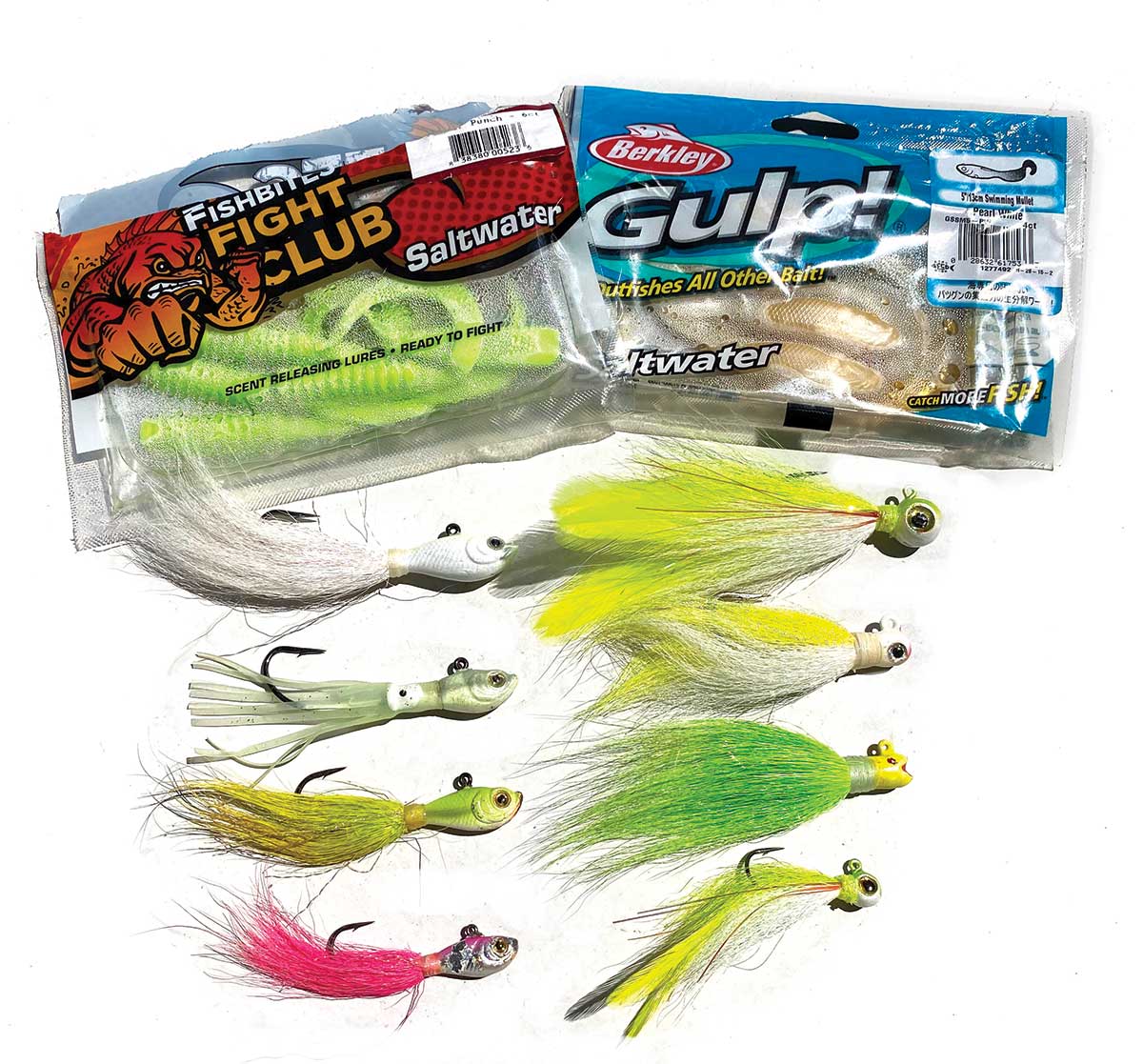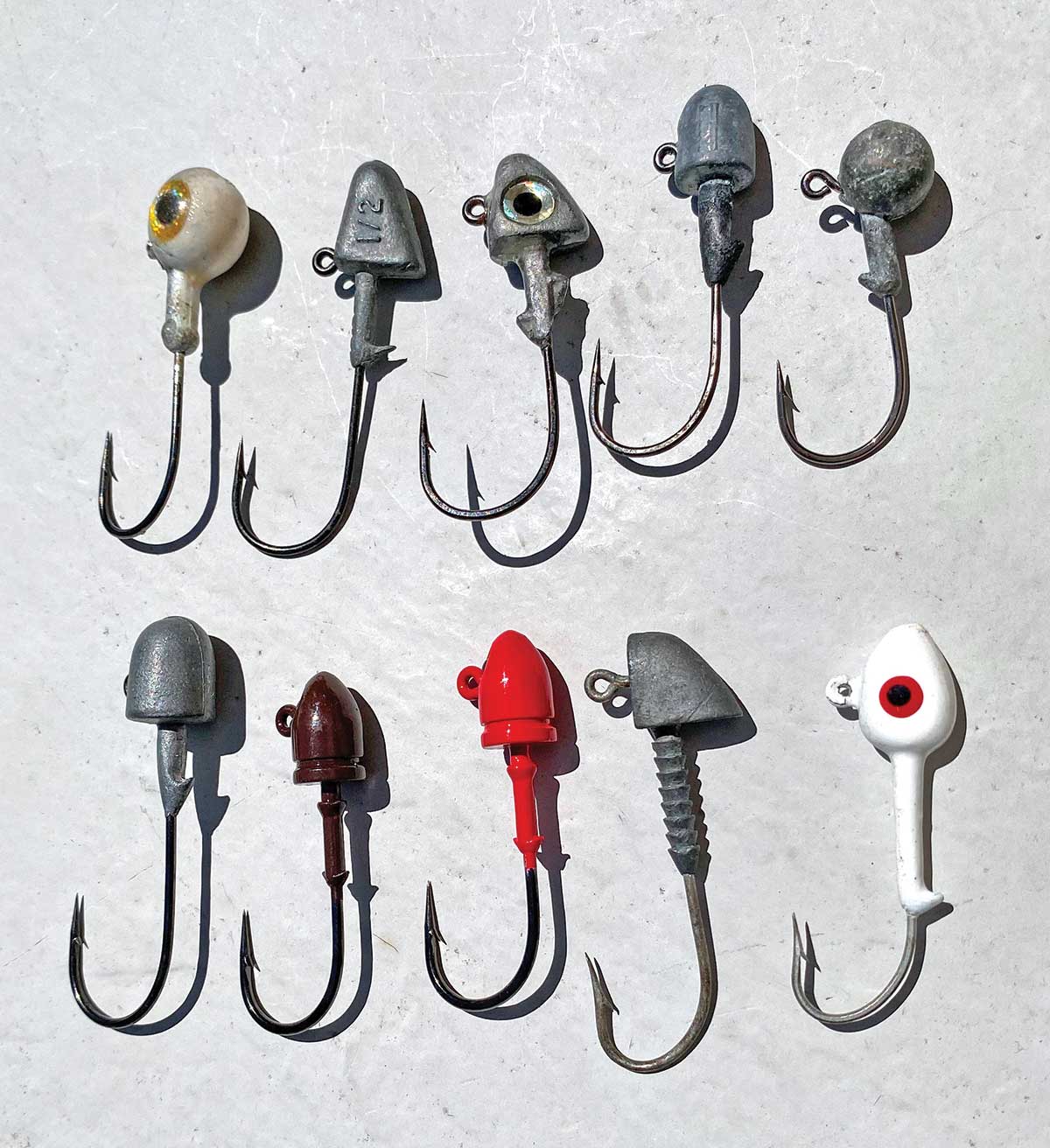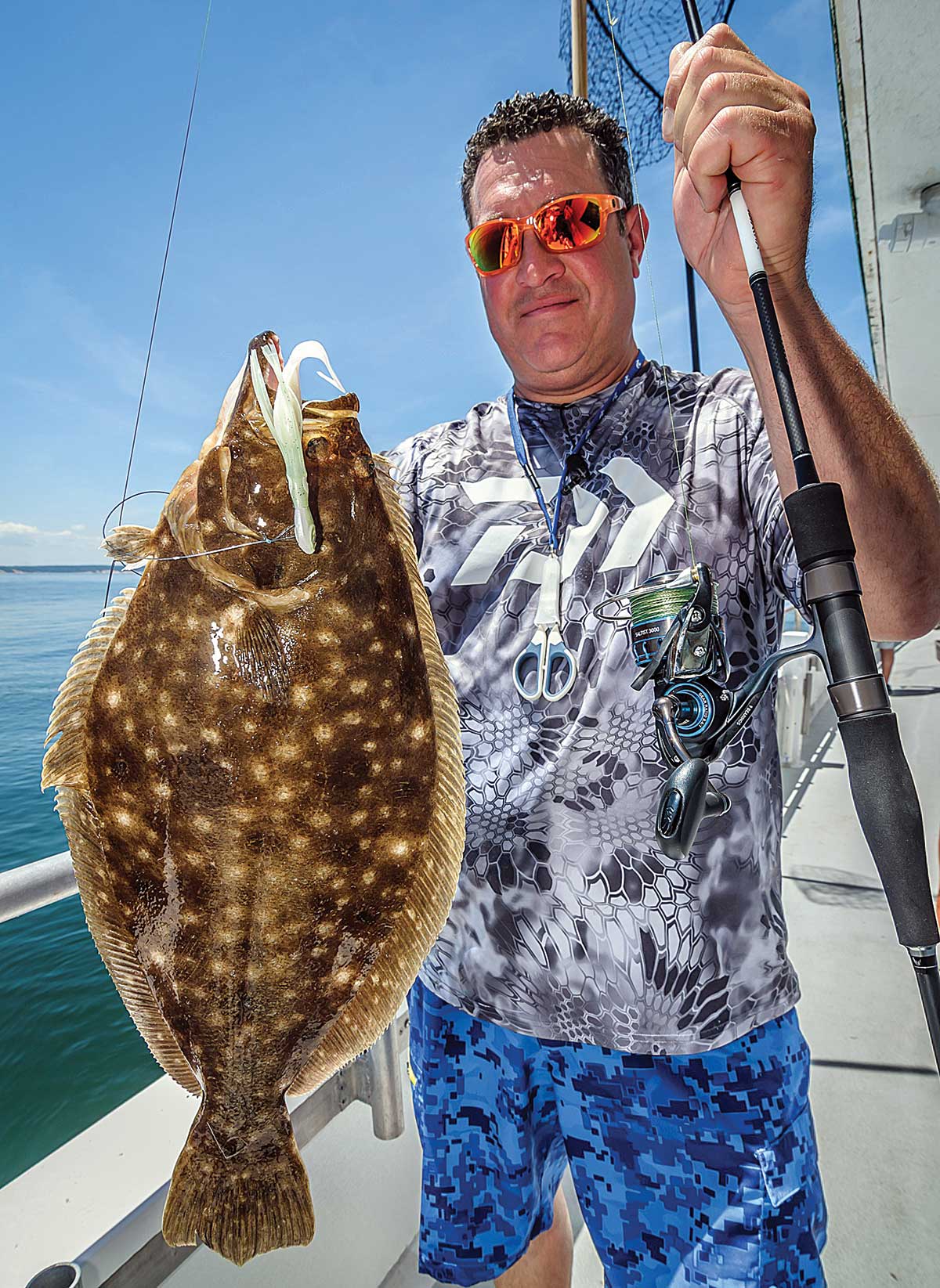Fluke fishing may not be as simple as it once was, but it can sure be a lot more fun, and more productive to boot.

Over the past decade, there has been a noticeable shift from the longtime tradition of dragging baits like spearing, killies, squid and fish strips for summer flounder, to the use of a wide array of artificials. Most of the focus is now on bucktails and an assortment of leadheads dressed with scented and unscented soft plastics. And despite the success of these imitations, there remains a place for the real thing on its own, or in combination with a bucktail or leadhead. The fact of the matter is that there are times when fish, including fluke, want meat. That can be the case early in the season when cool water temperatures cause the flatties to become less aggressive. And while many quality fluke have been caught on bucktails tipped with a scented soft plastic, doormats often find it hard to pass up baits like a live snapper or bunker, whole squid, bluefish fillet and other large, meaty offerings. For those reasons, it can’t hurt to be prepared to deliver some kind of natural bait when headed out for fluke.
For the most part, a bucktail or leadhead tipped with a scented bait like Berkley’s Gulp or FishBites will get the job done. Now, if you’re content with drifting lazily along while dragging a sinker and baited hook, by all means have at it. If you prefer to be more interactive, then artificials are the way to go, for a lot of reasons.
The Casting Factor
Rather than dragging your offering in the wake of your boat or a party boat, you have the ability to cast with artificials, which in many cases means you will catch more fish. I’ve seen plenty of folks dragging a bucktail tipped with Gulp in their wake. If you are one of them, you are sacrificing some of the greatest advantages to fishing with artificials. First of all, since you will rarely need payloads of more than an ounce for most inshore situations, you can rely on light spinning tackle for presenting your offerings. Besides making catching fluke a whole lot more fun, it gives you the ability to cast. Casting has numerous advantages. It allows you to adjust your rate of retrieve, hence the speed at which your lure moves along the bottom. By casting into the direction of your drift, you can make your lure remain basically stationary by simply keeping up with the slack in your line and jigging it in place, or you can move it as slow or fast as you want by the speed of your retrieve.
Casting into the direction of your drift, whether it is controlled by wind or current, allows you to fish smaller offerings which can frequently mean the difference between limiting out or putting up a goose egg. With no resistance to the current or the pull of the boat, the lighter payloads get down to the bottom easily and stay there. Dragging your sinker rig or lure behind the boat results in a planing effect that causes it to rise up off the bottom. As a result, you need more weight to stay down in the strike zone. The combination of thin diameter braided line and casting in the direction of my drift has allowed me to fish effectively in up to 75 feet of water with leadheads of no more than an ounce under the right conditions.

Fluke love to set up along structure like the edges of sandbars and drop-offs. Unless your boat is equipped with an electric motor or small trolling motor, it can be very difficult to maintain position and drift along the length of these feeding zones. Casting allows you to put your offering into these feeding stations even though the boat might be 50 feet or more away from where the fish are concentrated. During a party boat trip several years back, the captain was setting up his drifts to parallel a long sandbar that gradually sloped from 2 feet of water to 15 feet of water. He could only maneuver so close to the bar and most of the fares using conventional tackle and rigs were dragging their baits in 10 to 15 feet of water. From the bow I was able to underhand cast my bucktail tipped with a Gulp Swimming Mullet onto the shallow end of the bar and work it back down the slope of the drop-off. I was able to land five fluke, including a couple of keepers, over the course of one long drift while the rest of the 25 to 30 anglers accounted for just a few shorts between them. The fish were laying on the shallow end of the slope and feeding on baitfish swept off the bar making them easy targets for any offering being worked along that drop-off.
Another area where casting can really prove beneficial is during periods of slack current or even wind against tide situations that leave you sitting driftless in the same spot. Under those conditions, anglers dragging baits or artificials in their wake typically see the action shut down and blame it on the change of tide (slack water). In reality, it is more often the result of their baits or lures being relatively motionless and sitting in the same spot. Fluke can be very aggressive and they are attracted to moving prey. Current or not, they will rarely pass up a bucktail or leadhead tipped with a soft plastic that is moving and bouncing along the bottom. The same can be said for weakfish. I have seen many times when boats around us saw fluke or weakfish action come to a standstill while we continued to cast and catch fish right through the change of tide. You would think some of these folks would catch on but that has rarely been the case. So much for being observant of your surroundings while fishing, and adjusting your approach.
The Right Gear
Light tackle, whether spinning or baitcasting, is what makes this approach work. Everyone seems to have a different definition of light tackle so let me share with you what we consider the appropriate light tackle for targeting fluke with artificials. Light action, medium power rods of 6 to 6-1/2 feet are ideal. I lean towards the shorter 6-footers, especially if you do any fishing from a party boat or a center console with a T-top. Overhand casting is not permitted, or at the very least discouraged, on most party or large capacity charter boats and the shorter rod lends itself nicely to underhand casting. On center consoles, I’ve witnessed enough rods end up on the wrong side of encounters with T-tops to make any rod builder smile.

My favorite light tackle fluke rods are spinners and include the Loomis E6X 722SJR measuring 6 feet with a medium power rating. Don’t be fooled by its weight range rating of 1/8 to 3/8 of an ounce – it has the stiffness and backbone to easily handle an ounce or more if necessary. Basically a freshwater bass rod, it has beat bass into the 30-pound class and fluke to nearly 10 pounds, along with blues into the teens. The MSRP on it is $209.99. Another rod that fits the bill nicely, both in getting the job done and affordability, is Tsunami’s TFSS 601 MH. It’s a 6-footer with medium/heavy power and rated for 1/4 to 1/2 ounce payloads, which like the weight range ratings of most rods, is very misleading. It’s a tough one to beat in terms of getting value for your money, retailing in most shops for around just $40.
Match these rods up with a quality spinning reel with a good drag system in the 2500 to 3000 size range, with an edge to the 3000 size for most fluking situations. Penn, Daiwa, Okuma, Shimano and Tsunami all have quality reels that fit the bill. Braided line is the only way to go. Ten-pound test will get the job done under most conditions, especially when fishing bay areas, and it can take a surprising amount of abuse. If you feel the need for a little more security, are fishing bigger water, or fishing aboard party boats, you can bump it up to 15-pound test, but I do not recommend exceeding that. Generally speaking, the lighter the line required to get the job done, the better off you are.
Your Lure Bag
I maintain a light tackle bag that includes my preferred selection of fluke baits but the contents also cover a variety of inshore situations you are likely to encounter while fluking. Those same baits that turn the heads of summer flounder will also get the attention of weakfish, schoolie stripers, blues, sea bass and the biggest kind of porgies. I always include some topwater and swimming plugs in the 1-ounce range, and a few small metals that can be handled by the light spinning gear being used for fluke. While I have yet to catch a fluke on a popper myself, I have caught them in the surf on Bombers, Hellcats, large darters, needlefish, diamond jigs and other metals. The reason for the expanded arsenal is many “fluke trips” have turned into mixed bag days with most of the above mentioned species part of the action.

When it comes to targeting fluke, a selection of bucktails and leadheads will pretty much cover all of the bases and serve as the foundation for delivering a wide array of soft baits. Weights for both should range anywhere from 1/4 to 1 ounce to cover the range of conditions you are likely to encounter on the inshore grounds. As far as types of jig heads, there are scores of designs out there and most will work, but I favor bullet shaped like Kalin’s Ultimate Jig Head from Acme. I’ve never found the color of the head to make much difference and often fish them unpainted. I also like round ball style heads, especially if they include eyes. There are many designs that incorporate eyes into the heads of even in the smaller size jigs, and I do believe eyes can make more of a difference than the color. One of the most important factors in selecting a jig head is the hook. I like the finer wire, yet strong Mustad Ultra Point Hook on the Kalin jigs for their ease of penetration. Mustad also manufactures their own bullet shaped jig head with eyes and their Ultra Point Hook.
Bucktail choices are too numerous to mention as the popularity of bucktailing for many different species has spawned a wave of bucktail manufacturers. I would be remiss not to mention Spro bucktails and Squid Tails since they seem to have cornered the market when it comes to bucktailing for fluke, and Gulp and a Spro bucktail go together like peanut butter and jelly. No question they are very effective, but I have caught fluke on a wide variety of bucktail designs too numerous to mention. In the case of bucktails, color can make a difference. White is always a good first choice, but chartreuse and pink do account for more than their share of summer flounder.
Now for the “meaty” part of presenting artificials to fluke. What you put on that bucktail or jig head can make all the difference in the world. While I’ve caught a fair number of fluke on unadorned bucktails there is no debating you will have more success by adding a soft plastic, especially a scented one. Gulp has become the standard for many fluke fans who have made the switch from natural baits to artificials. The Swimming Mullet and Saltwater Grub grab most of the attention, but there are a few people out there who swear by the 3-inch Saltwater Shrimp. When it comes to colors, the selection can become baffling, with nuclear chicken, pearl white, chartreuse, and pink all being praised as the “hot” color at one time or another. Berkley started a stampede to tackle shops last season with their introduction of salmon red Gulp, which I have yet to get my hands on.
Last season I got to test Fishbite’s new Fight Club selection of soft baits. I began with the 5-inch Dirty Boxer Curly Tail and couldn’t leave it. Pink was the hot color and I caught fluke on it from August through the first week of November, the latest I have ever caught fluke inside the bay. Just last night, I pulled two 20-inch plus fluke from a local mainland dock on that same pink Dirty Boxer. Extremely durable, the lineup also includes a shrimp, jerk bait and paddle tail in a wide range of colors.
ZMan has also entered the fray when it comes to targeting fluke with soft plastics. Known for their elasticity and durability, they have come out with a curly tail grub that is impregnated with Pro-Cure Flounder Pounder Super Gel. I have yet to try them but the combination of scent and durability should make these baits a no-brainer.
There are many unscented soft plastics that draw strikes from fluke, among them Zoom Flukes, Fin-S Fish, Bass Assassins, Cocahoe Minnows and Sea Striker Curly Tails. There are also many scents out there that can be used to enhance those baits. Leading the list where fluke are concerned are Gulp Alive, Pro-Cure and Smelly Jelly. All have proven effective on summer flatties.
Fluke fishing may not be as simple as it once was, but it sure is a lot more fun, and more productive when you combine light tackle with a selection of artificials that summer flounder often find hard to resist.




